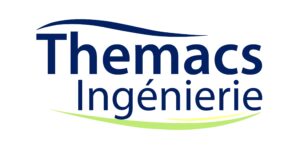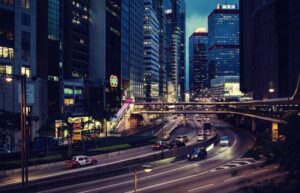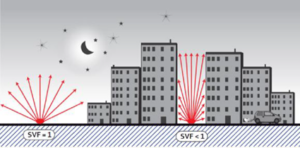Urban heat islands (UHI) refer to significant temperature differences between city centers and the surrounding rural areas, which are particularly noticeable at night. Understanding the parameters that influence them is necessary in order to better anticipate them and implement appropriate solutions. At THEMACS Ingénierie, we analyze the three major factors that have the greatest influence on UHI: albedo, emissivity, and urban canyons.
Albedo
Albedo refers to the ability of a surface exposed to solar radiation to reflect the energy it receives. It ranges from 0 to 1 :
– 0 corresponds to a completely black surface that absorbs all the energy emitted by the sun. – 1 corresponds to a perfectly white surface that reflects all solar radiation.
A dark surface, such as impermeable ground (concrete, asphalt), dark roofs or walls (bricks), absorbs a large amount of energy and thus accumulates a lot of heat. This heat is then released en masse at night, contributing to the formation of urban heat islands.
Emissivity
Thermal emissivity is a dimensionless property that characterizes a surface’s ability to emit infrared radiation. It depends on several parameters, including temperature, wavelength, and surface condition.
– A material with high emissivity easily releases absorbed heat. – A material with low emissivity retains this heat for longer, which contributes to the warming of the ambient air.
In large cities, heat increases rapidly due to factors such as heavy traffic, air conditioners, chimneys, and the use of reflective materials (asphalt, tiles, matte paints, etc.). Emissivity therefore plays a crucial role because it determines how a city cools down at night. Poorly chosen materials can amplify UHI by slowing down nighttime cooling.
Urban canyons
Urban canyons refer to areas where buildings are so close together that there is little space between them, limiting air circulation. This configuration tends to trap accumulated heat, especially during the day when the sun is shining (Figure 1). It reduces heat exchange, particularly radiative exchange, during the night. As a result, the heat accumulated by buildings and the ground cannot dissipate effectively, thereby accentuating UHI.
Figure 1 – The “sky view factor” – (Source: APUR)



